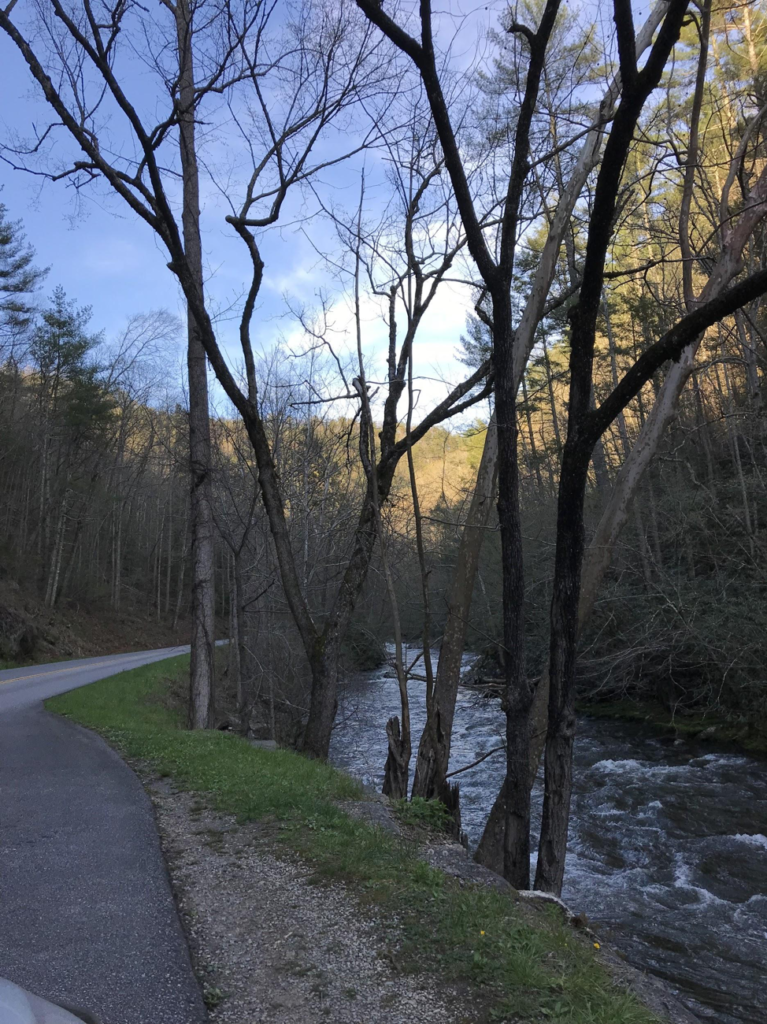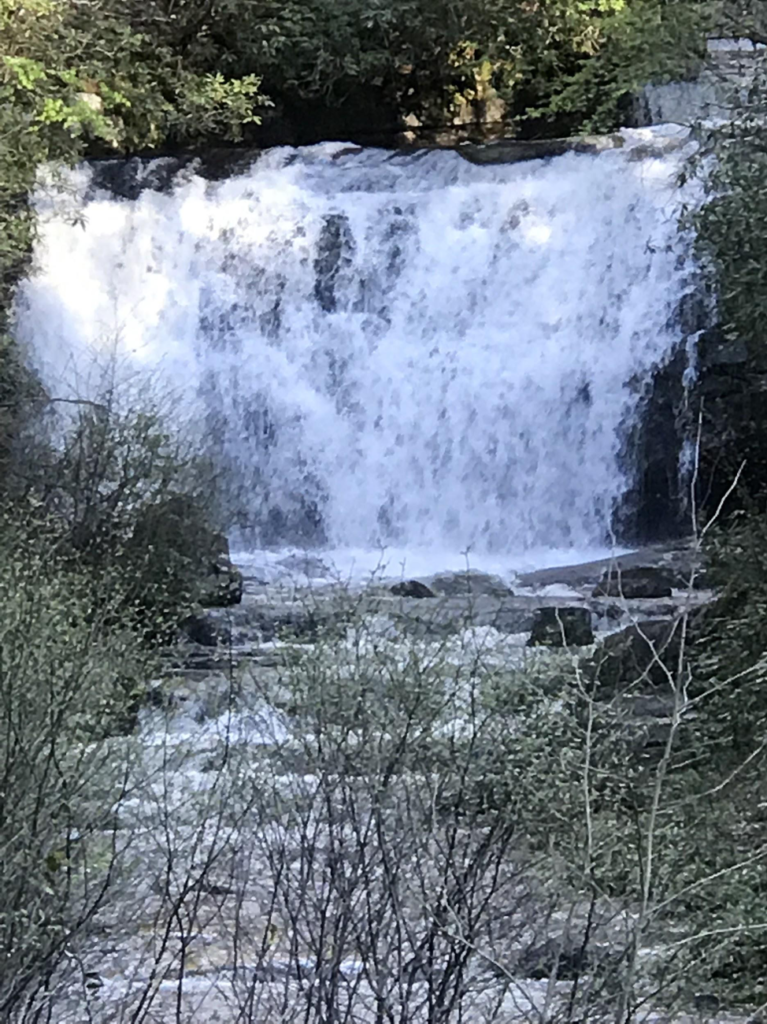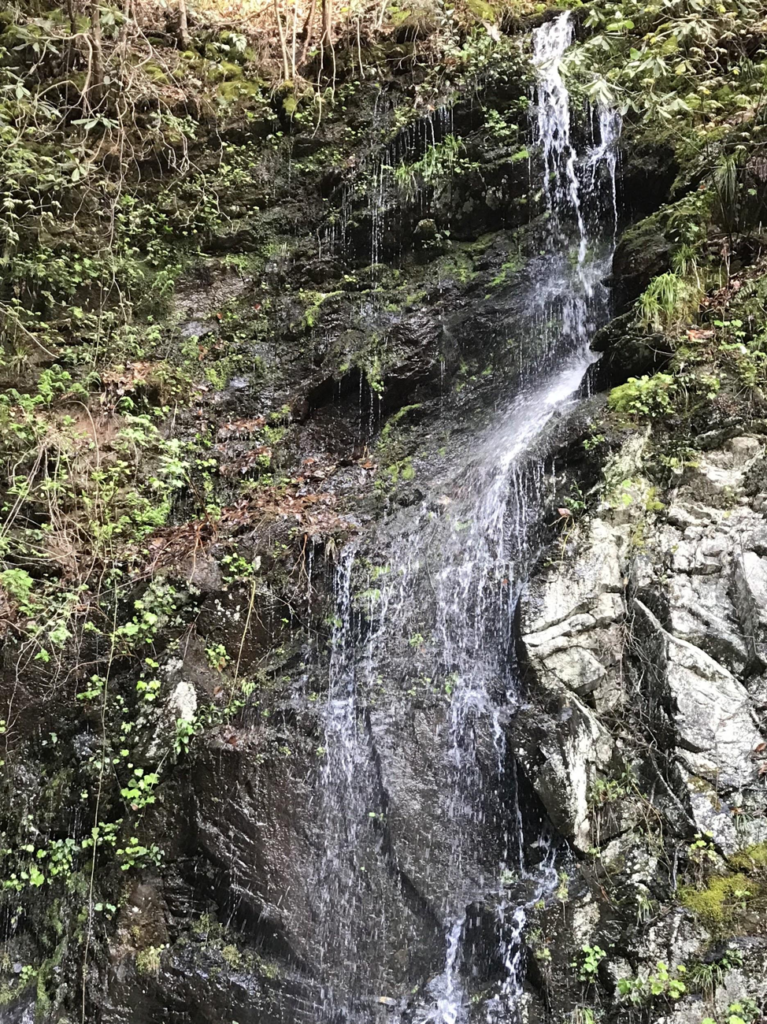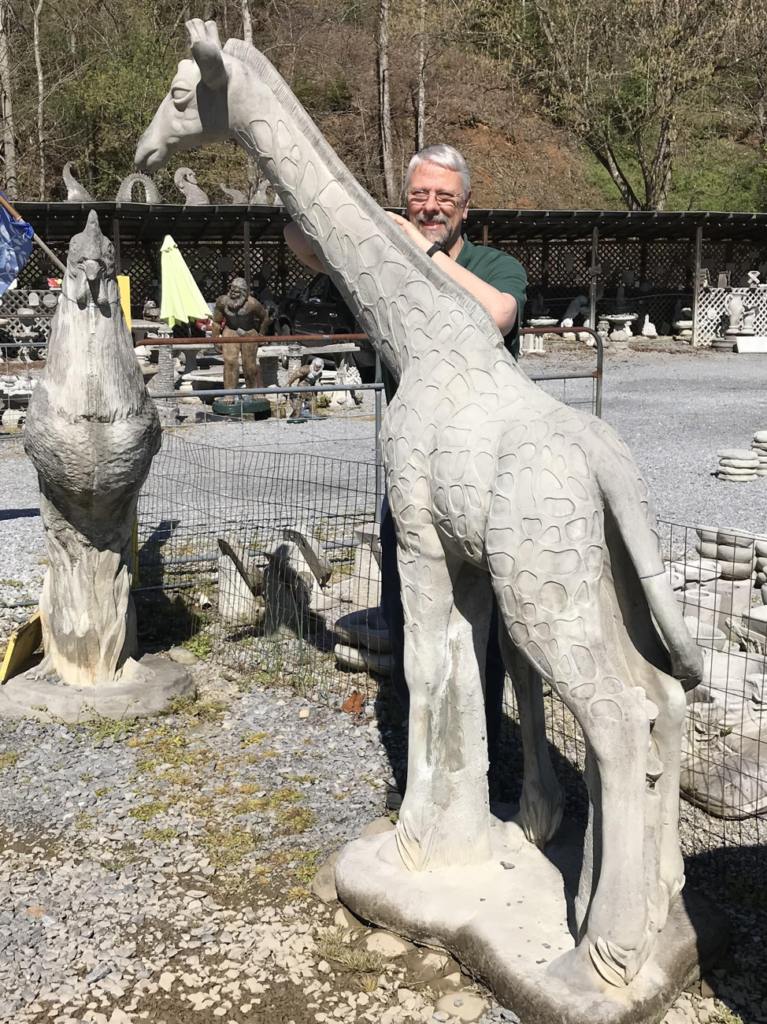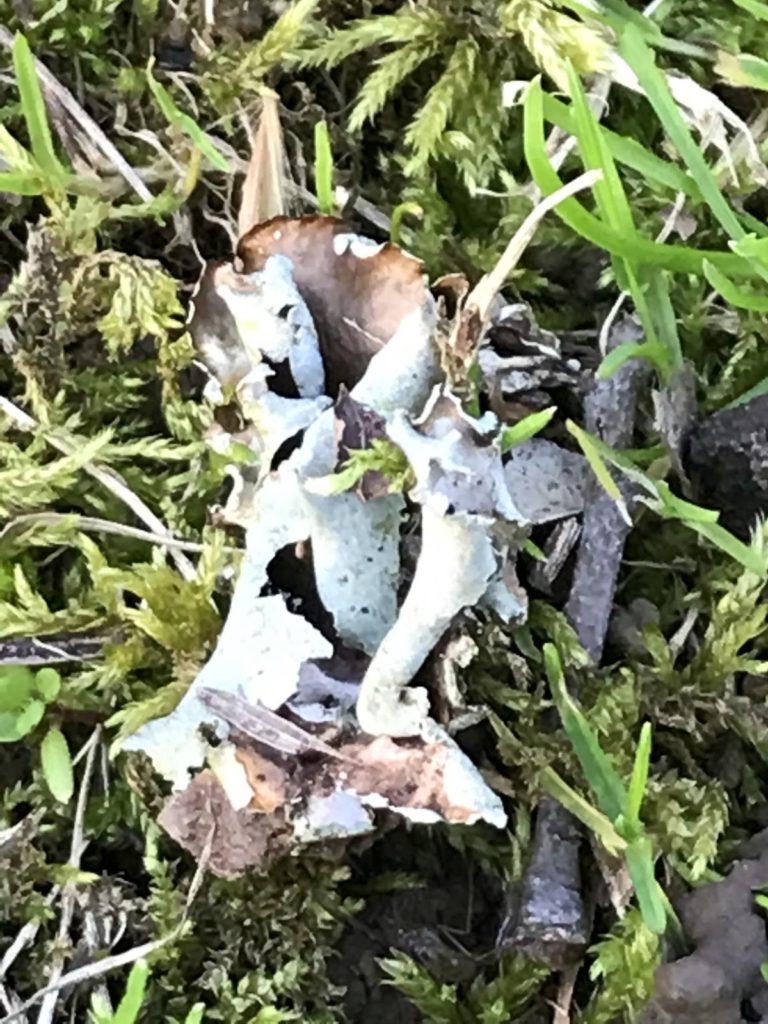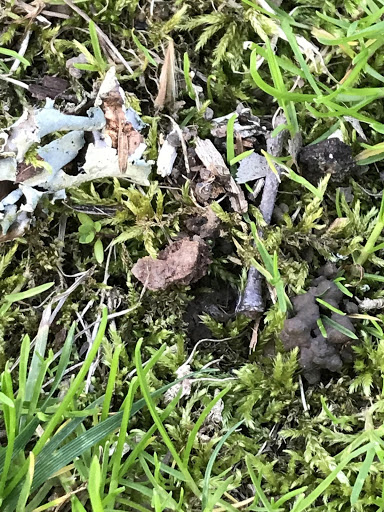My brother and my husband are both wonderful photographers. They’ve inspired me to learn a bit about the art of photography. I will likely never develop their level of skill. But it has opened up a whole new world to me, learning to see things through a lens. It brings focus to my vision just as journaling brings focus to my thoughts. I have begun to learn to see a different kind of beauty, often hidden from the casual observer, by intentionally studying the details. Lichen on a rock. Tiny flowers beside a majestic rushing stream. Insects in search of their next meal. Dime-sized patches of moss.
Today I learned that my iPhone does an amazing job with close-up photography. I discovered details, hidden beauty, I would have missed without the blessing of this tool. How many more details are just waiting to be discovered, springboards to praise of their Creator? How many wondrous gifts has He placed in my path to give me delight?
As we entered the Great Smoky Mountains National Park on our way to Cade’s Cove, I knew we would be in the park for at least a couple of hours. Spring has arrived, but things are only just beginning to bloom. Still, there was incredible, ancient beauty everywhere I looked. I had intended to spend a bit of time taking pictures, but I didn’t even know where to begin. I remembered the theme of this pilgrimage, “Seek, Listen, Surrender”. Overwhelmed, I prayed, “Lord, what do You want me to see?” And I sensed Him saying, “Just enjoy it, my daughter.”
In Song of Songs 2:10-13, Solomon wrote, “My beloved speaks and says to me: ‘Arise, my love, my beautiful one, and come away, for behold, the winter is past; the rain is over and gone. The flowers appear on the earth, the time of singing has come, and the voice of the turtledove is heard in our land. The fig tree ripens its figs, and the vines are in blossom; they give forth fragrance. Arise, my love, my beautiful one, and come away.’” Although Solomon was a real king, and it is believed that his bride, the Shunamite lover in the Song, was a real woman, theologians have historically interpreted the Song as a picture of the love of Christ for the Church, and her love for Him. How sweetly He woos us! He calls us to come away and simply delight in Him. I am ready to come away. My soul is hungry. Where will we go? Where will He lead me? “All journeys have secret destinations of which the traveler is unaware,” said Martin Buber. The road to Cade’s Cove was no exception. Although I had seen pictures, I did not know what waited around each bend in the road. And there were many bends! There was water. Always water. But always different. Rushing white water streams. Still pools full of frogs. Small trickles. And waterfalls. Beautiful, incredible, stunning waterfalls.
The Smokies are known as a temperate rainforest. The life here is lush. The variety is astounding. But none of it could live, never mind thrive, without the water.
In Jeremiah, the Lord identifies Himself as “the fountain of living waters”. He is the source of our very life. He sustains us, and plans to do so forever. John saw in his Revelation what the future holds for those who belong to Christ. “For the Lamb in the midst of the throne will be their shepherd, and he will guide them to springs of living water, and God will wipe away every tear from their eyes.” (Revelation 7:17). The psalmist exulted in this God, and called even the earth to worship Him. “Tremble, O earth, at the presence of the Lord, at the presence of the God of Jacob, who turns the rock into a pool of water, the flint into a spring of water.” (Psalm 114:7-8)
Many of the waterfalls we saw today seemed to spring right out of the rock. I think waterfalls will always be a reminder to me of the faithful, abundant provision of God. I have been a bit nervous about making this trip. As I have noted before, I am not the best traveler. And some of the roads we plan to travel go through areas that are more sparsely populated than I prefer. But today was a vivid reminder that I need only trust in the never-failing, overflowing provision of my Lord. He who sets the mountain streams in their courses and makes the flowers bloom in rocky places will surely care for me.
